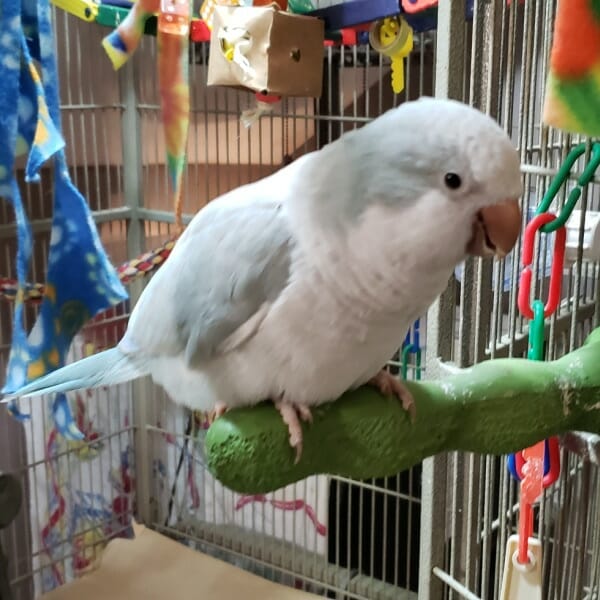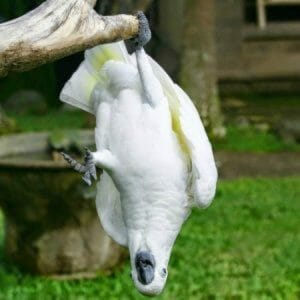Last Updated on by Mitch Rezman
This question that came in recently is a reminder that we as a company should assume nothing.
“I have a dark-colored copper cage that is about 25 years old.
I am having a new cage bottom made. I would like to paint it with a powder-coated paint. Do you have any products that would help me or do you know where I may purchase them”?
Regards – Mark
editors note – heard on the street: “I want a powder-coated cage” “Everyone is selling powder-coated bird cages” “I don’t know what a powder-coated cage is but I think my bird should have one”
Hi Mark
Having managed a small family-run powder coat facility back in the last century I am intimately familiar with Electrostatic Powder Coating (as well as “fluidized powder bed” powder coating).
Your question also makes an important point.
The majority of people let alone caged bird keepers have an opaque view of powder coating. File under setting the record straight.
A bird’s cage is the single most important apparatus he or she has.
To that point, we’ll be assisting you in raising your caged bird-keeping knowledge base and will augment the written information found here on our blog with our new “cage cam” videos.
That’s right. We are going to bring the camera inside the cage to help you see what your bird sees (although they see much better than we do).
Going where no smartphone has gone before.
Time to hit the on-ramp.
From Wikipedia – Powder coating is a type of coating that is applied as a free-flowing, dry powder. The main difference between a conventional liquid paint and a powder coating is that the powder coating does not require a solvent to keep the binder and filler parts in a liquid suspension form. The coating is typically applied electrostatically and is then cured under heat to allow it to flow and form a “skin”. The powder may be a thermoplastic or a thermoset polymer. It is usually used to create a hard finish that is tougher than conventional paint.
Your cage bottom Mark has to be sandblasted to create a rough surface guaranteeing adhesion by the powder which is applied by special electrostatic “guns” that charge the particles positively causing them to cling to the now grounded negatively charged – your cage bottom held by a frame designed for this purpose.
This fellow does a very good job of explaining the powder coat process in his video.
If you happen to be bumming around China or Vietnam and pass a cage manufacturing facility we’d be grateful if you were to knock on the door and ask if you take some pictures and a little video for the friends back home.
In the meantime, I found that video example of DIY powder coating (above).
Just picture those parts as say, birdcage parts.
This also drives home the point that powder coating is everywhere you look.
It’s seen a lot today in outdoor furniture for consumers and at the commercial level. You’ll find it on commercial handrails, mailboxes, cars motorcycles, and more.
Based upon my experience Mark, I can relate to you that your cage bottom has to be suspended and/or run through an oven at approximately 400°F for eight or 10 minutes (depending on the powder used).
If you are truly motivated to DIY, it’s important to note that preparation of the surface is probably 3/4 of the process.
It’s best to have a portable sandblaster from companies like Harbor Freight or Vevor for surface preparation.
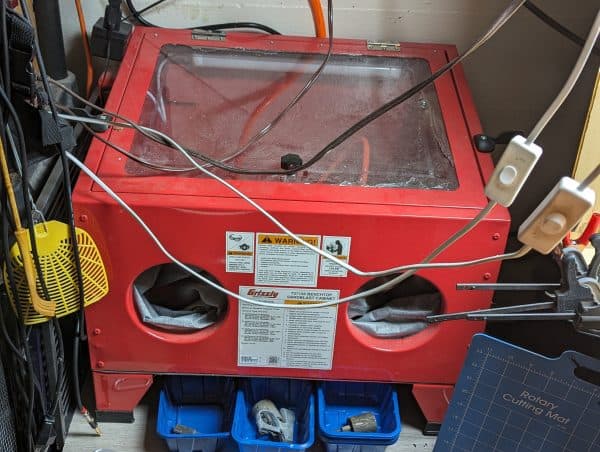
This is my sandblaster – you would need a much larger one for a birdcage bottom
Paint on the other hand is readily available in cans: information on selecting the proper:
MitchR
This is where we take a slice of a holistic view of your captive bird’s environment.
Editor’s note: we give our birds far less credit than they deserve for their ability to adapt
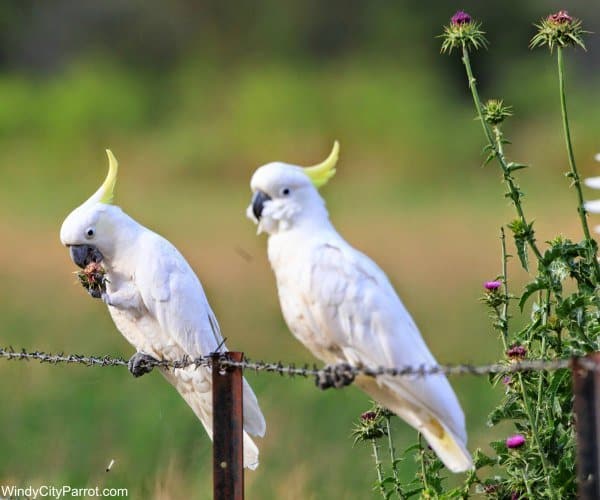
Remind me ~ what the experts say is an appropriate diameter perch for a large cockatoo?
Bird flocks in the wild tend to reside in the same general area in the same set of trees as long as the area proves to be “safe haven”.
When birds are on the move looking for food, foraging, meaning they are flying a mile or two and landing somewhere.
In most cases, it will be on a tree that they never landed on – or an arbitrary rock (less chance of food).
This is why birds have few nerves in their feet. It makes adjusting “on a dime” to a rough new area – an everyday fact of life for a bird in its natural environment.
We also know that birds have no muscles in their legs and feet. (from the hips down).
Their legs and feet are controlled by an eloquent pulley system made of two tendons in each leg.
Thus when they clamp their feet fully around anything including cage bars, it is with the full force of their legs and feet.
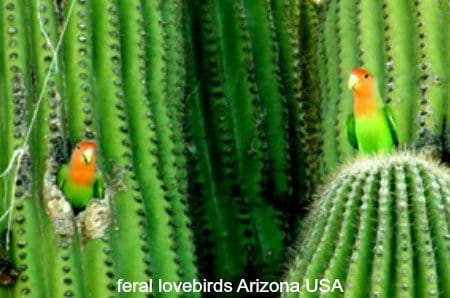
DYK, there are feral lovebirds living in Arizona cactus?
Barbed wire and cactus teach us never to underestimate our bird’s abilities to adapt
This includes climbing up and down their cage.
Something we encourage because the more they do it the more exercise they have and it helps maintain overall strength.
When birds climb up and down ON their cage (we are leaving the discussion of perches and letters for another time) they are assisting their ascent or descent with their beak which is for razor blades having the potential strength of almost 300 psi.
They are also “squeezing” cold hard metal – cage bars which stress your bird’s feet out
This brings us to (FINALLY) why we want our cages to be powder-coated.
I really liked this powder coat DIY video because it’s a low-cost system using a household oven. (You can not cook food in an oven once it has been used for powder coating)
When you paint anything, you are coating the “substrate” ie; the cage metal, dry wall, the restored piece of furniture.”
The “powder” In the term powder coating on the other hand chemically bonds to the metal substrate aka bird cage parts. As noted preparation of the surface is probably 3/4 of the process.
While at Shelf-Kote everybody had to spend time in the sandblast booth. This is the suit and oxygen pipes we wore.
Always hoping that somebody remembered to replace the air filter in the oxygen line before you were racing to meet a deadline so you wouldn’t suffocate.
Powder coating done right will withstand a parrot’s abusive feet and beak due to this unique marriage of particle and metal united in the church heat but all powder coating is not the same. Improper surface preparation Can lead to premature flaking of the coating.
We hear on occasion from people who say their bird is chewing the coating of the cage.
To which we ask “How many toys are in the cage?” And the reply usually goes something like “He really likes that bell.”
“Sigh”
BTW: A birdcage’s natural enemy is water
Although the powder coating is impervious to liquid, the square tubular components usually forming the corners of larger bird cages are hollow.
When the interior of this metal gets wet it is slow to dry and accelerates rust.
This happens a lot when you drag your birdcage out to the driveway the moment the snow has melted.
This is your day in the sun to try that new new 2580 psi pressure washer on your cockatoos cage that has gotten, well – soiled – over the winter.
Put the wand down and step away from the power washer Kemosabe.
There will be a puddle of water inside each of the four corners with the casters that attach to the metal tubes.
If it’s a really good fit with the plastic fittings there could be a small puddle of water at the bottom of each of your cage’s feet for weeks.
The deck will be there when the snow clears.
Keep the cage where it is. Place something like an office chair mat or a scrap piece of vinyl flooring under the bird cage to protect your floor and have an easy-to-clean surface.
Get a handheld steam cleaner.
If we could find one to sell you that we can make a buck on without ripping you off you would see the CTA (call to action) button here – to buy one now.
You’re on your own for finding one grasshopper but it will solve not only the cleaning of the cage but the cleaning of the accessories within the cage while sanitizing everything without the use of chemicals. Take that, environmentalists.
Cagescaping tip: Before installing anything new into the cage, It’s important that you have observed your bird’s movement throughout the cage and are aware of its “poop trajectories”.
This will save time in daily cleaning and maintenance and make for a healthier environment.
When poop is on accessories like ladders, Your bird later will groom its own feet – nuff said.
You are a caged Bird keeper, which is why you are reading this. Your bird is a captive-bird. If you took your cage outside with your bird in it and opened the door your bird would eventually fly out never to be seen again.
With this whole powder coat metal bird feet tendon beak thing in the background, I hope you can begin to see why although a cage is useful for your bird to navigate you can put undue stress on its feet.
Your bird’s beak attacking it daily certainly is not prolonging the life of said birdcage.
Rather than fighting the cage, use the cage as a support system for multiple thoroughfares and gateways inside and outside of the cage.
Booda soft rope perches are one of the most effective birdcage accessories for this purpose.
I hope you found this brief journey into the mysteries of birdcage manufacturing, interesting.
At least more so than knowing what the numbers on the side wall of your car tires mean.
The two-digit number after the slash mark in a tire size is the aspect ratio. For example, in a size P215/65 R15 tire, the 65 means that the height is equal to 65% of the tire’s width. The bigger the aspect ratio, the bigger the tire’s sidewall will be.
Written by Mitch Rezman
Approved by Catherine Tobsing
Your Zygodactyl footnote
I provide foster care for Oasis Sanctuary parrots in need of medical care. I currently have 18 of the nearly 800 Oasis parrots in my care.
I ordered your light bulbs and they arrived today.
All 6 are now in use.
One is over a plucked Vos Eclectus female’s cage. This parrot has liver disease and chronically low serum calcium despite daily calcium supplements.
The second bulb is in use for a Scarlet Macaw who 21 years ago broke her back. She has many health problems now and the bulb will supply light to help her.
The third bulb is for light to provide general lighting to the area where the macaw & Eclectus spend their days with 2 other parrots.
The last 3 bulbs are installed in the “Chat Room.”
This is a bedroom housing sleeping quarters for 13 parrots and it is the daytime play area for 7 of the birds. Their medical needs range from old age to recovery from surgery.
I just wanted you to know the use I put the bulbs to in case anyone asks what they are “good for.”
Ruth Ann La Rue – The Oasis Sanctuary – Business Manager & Foster Care Provider Customer
Dear Ruth Ann
Thank you for telling us about your use of the bulbs. It sounds like they are doing the best they can for the birds. We are thrilled to hear this. I hope the birds “feel better” for them being there.
Thank you very much – Mitch
Author Profile
Latest entries
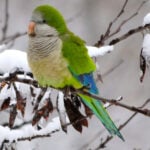 The Traveling BirdJune 26, 2025Can You Name 5 Parrot Species That Are Living Wild in the USA?
The Traveling BirdJune 26, 2025Can You Name 5 Parrot Species That Are Living Wild in the USA?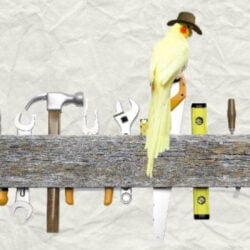 Bird BehaviorJune 26, 2025How is it Parrots Are Problem Solvers Social Animals and Even Use Tools?
Bird BehaviorJune 26, 2025How is it Parrots Are Problem Solvers Social Animals and Even Use Tools?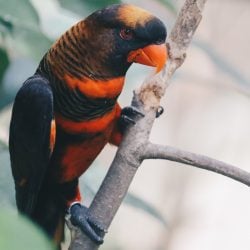 Bird & Parrot AnatomyJune 25, 2025How a Tiny Chemical Modification Makes Parrots Nature’s Living Paintings
Bird & Parrot AnatomyJune 25, 2025How a Tiny Chemical Modification Makes Parrots Nature’s Living Paintings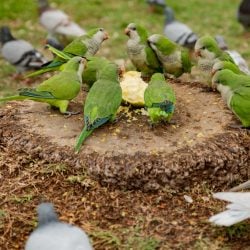 PigeonsJune 20, 2025How Do Parrots Thrive in Cities Outside Their Native Habitats?
PigeonsJune 20, 2025How Do Parrots Thrive in Cities Outside Their Native Habitats?
